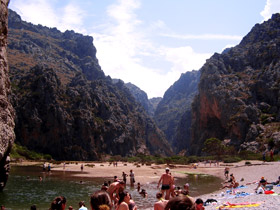 Students come to the first English lesson of the new school year expecting the inevitable: the teacher asking them about their summer holidays. Justifiably, they’re bored with it. Here’s a twist to liven up this old routine:
Students come to the first English lesson of the new school year expecting the inevitable: the teacher asking them about their summer holidays. Justifiably, they’re bored with it. Here’s a twist to liven up this old routine:
- Ask your students to get into groups of three or four.
- Tell them that each group member has to tell their groups a summer story (this is where they will immediately start moaning and groaning, or worse, falling asleep, so don’t follow my example and get to the point quickly) which is either hard to believe but true or one which is completely made up but believable. The idea is that they have to trick their groups into believing a false story or make them doubt a true story. The only restriction is that the whole of the story has to be true or made up, not only certain elements or parts.
- Group members are prompted to ask questions to try and establish the veracity of the stories.
- Then group members declare whether they think the story was true or made up.
- Students get points in two ways: when they’re the storyteller, they get one point for each deceived listener (that is, a group member who indentified a story incorrectly) and as listeners they get one point for each story they identify correctly.
- Next, groups decide on the “best” story within their individual groups – the one which they think is the most likely to deceive students in the other groups when they present their chosen story to the whole class. They can even coach the student who will represent their group and refine their story to make it more believable or unbelievable.
- The best story chosen in each group is presented to the whole class.
- Again, all students from the other groups can ask questions before deciding whether the story is true or made up.
Variations:
- While the points system adds a competitive element to the activity, you can skip it if you think your students might not be comfortable with it.
- You can allow false stories to be false only in certain elements – then the challenge is that listeners have to find which element is made up.